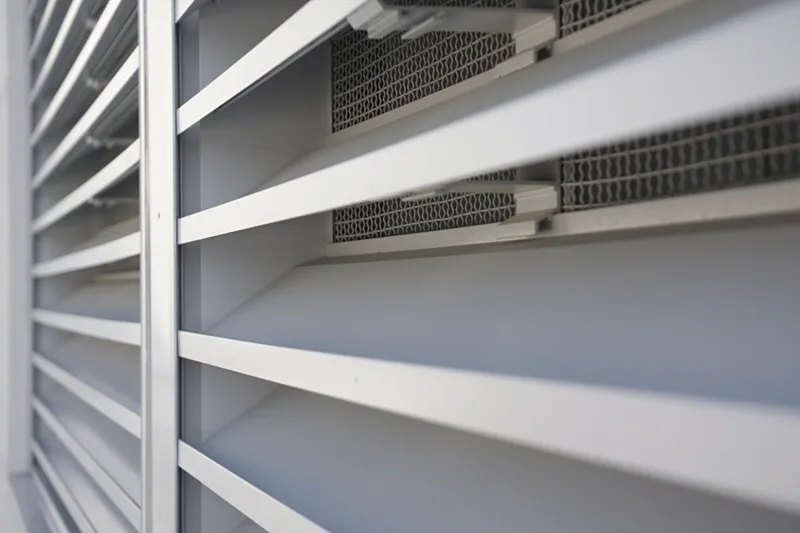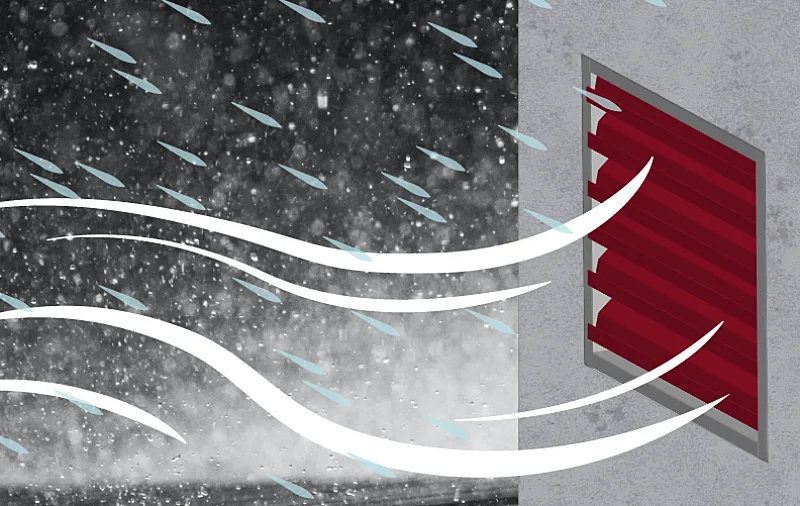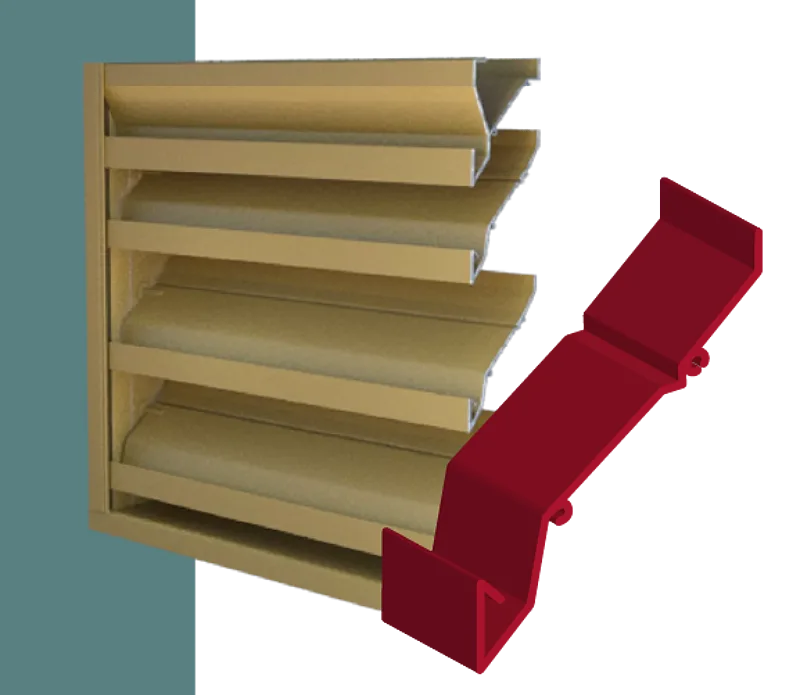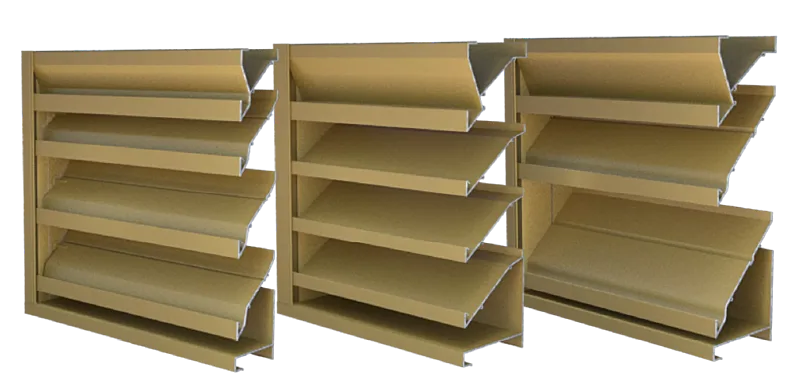The Purpose of Louvers
Louvers protect ventilation points from rainfall. They are commonly installed at the intake points of the HVAC system to keep ductwork dry during a storm. Louvers can be installed anywhere on the building to reject incoming water. For example, you can build a wall of louvers that keep rain out while providing fresh air to the interior space.

Wherever you decide to install a louver, there are several crucial factors to think about when choosing the right louver for the location. You will need a louver that provides the required protection and allows the necessary amount of air through. For this blog, we will focus on the protection aspect of louvers. We will be looking at how louvers protect from water infiltration.
All louvers will provide a basic level of protection from rain. Louver blades are set at an angle to deflect incoming water before it can pass into the space behind the louver. At a greater angle, the blade can more easily deflect water, but it will also be harder to draw air through the louver. Blades without drainable features provide a basic level of protection, which works fine for light rain. Water will naturally fall off the blades and out of the louver. However, as the rate of rainfall increases, water will begin to collect on the blade. If the blade has no drain features, the water can be carried into the louver. This is known as water infiltration, which damages ductwork and other HVAC components. Drainable louvers have drain features that help the louver reject water before it can collect on the louver.

Drainable Features
Features like drain channels and face troughs provide an avenue for collected water to travel down to the louver’s sill. Drain pans and sill extension accessories can provide additional protection at the sill, so that water won’t collect and backsplash through the louver. You may also notice additional features, such as baffles or hooks along the blade’s profile. These features can catch water as it passes with the air stream, preventing water infiltration from wind driven rain. These features may decrease the louver’s ability to easily pass air through its free area. Catches are typically found louvers designed for severe weather and wind driven rain, where the louver’s performance will focus on rejecting heavy rainfall.
The louver’s submittal will have drawings of the louver, which show the details of the louver’s design. Check the drawings and you will see these drain features on the louver's blade profiles. Manufacturers will also label drain louvers as “drainable”. For greater protection, or to meet certain weather requirements, you will need a severe weather louver. Severe weather louvers have the same drain features but undergo more rigorous testing to receive special ratings. Requirements will call for these testing standards when a severe weather louver is necessary.

Measuring Water Rejection
There are two ways to measure a louver’s ability to reject rainfall: beginning point of water penetration and wind driven rain resistance. Most louvers use a beginning point of water penetration, or a point in air velocity when rainfall is likely to penetrate the louver. Rain will be drawn towards the louver as air passes between its blades. If the air is moving fast enough, it can drive the rain into the louver. There are two ways this can happen. The rain can be driven into the louver by high winds, or the rain can be drawn in as the louver takes in air.
When the velocity of the intake air exceeds the beginning point of water penetration, then the water will infiltrate the louver. This beginning point is measured through water penetration testing conducted in a specialized laboratory, approved by the Air Movement and Control Association (AMCA). The testing methods for water penetration are defined in AMCA Standard 500-L. The key is finding a louver that can meet your airflow requirements without exceeding its beginning point of water penetration.
Wind driven rain is heavy rain carried by strong gusts of wind. A standard louver is not designed to prevent water infiltration in these situations. These situations call for severe weather louvers rated for wind driven rain. Wind driven rain testing involves subjecting a test louver to rain while air passes through the louver's face. Technicians will measure the amount of water that infiltrates the louver at various points in the test and assign an effectiveness rating at each stage. Louvers with an A rating must reject at least 99% of incoming rainfall. Wind driven rain testing, like water penetration testing, is conducted in an AMCA-approved laboratory by trained professionals.
The Air Movement and Control Association provides the standards for testing louvers and recording the data of the test. AMCA-approved labs will have the necessary equipment to accurately test and measure water infiltration. This data will be present on the louver’s submittal document. Always check the submittal for relevant data when selecting a louver. Ensure the desired air velocity will not exceed the louver’s beginning point of water penetration.

Designing the Right Louver with AWV
These features are important for preventing water infiltration, but they may also affect air flow. As air passes through the louver, it will have to pass across these features. This will cause a loss in air pressure, known as pressure drop. The system will need to expend more power to draw the necessary air through the louver. Louver design will often be a balancing act between efficient airflow and protection from water infiltration.
AWV build louvers for a variety of scenarios: from basic weather protection to severe weather and hurricane-rated louvers. Looking for louvers that meet your requirements? Contact AWV today. We can help you find the right louver for your next project.






